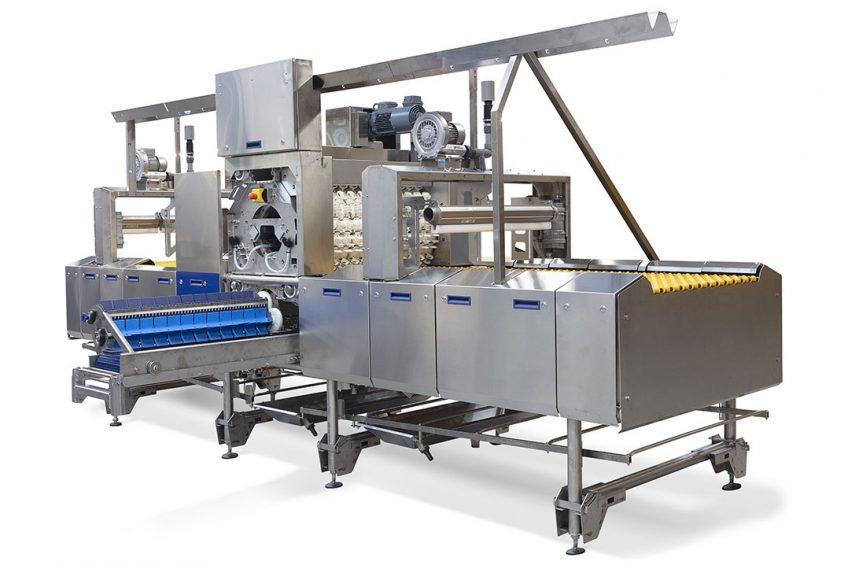Stop cross-contamination

The egg industry is facing a serious hygiene race. Recent outbreaks of salmonella infections show that not all practices within the egg industry are able to prevent cross-contamination. A clear sign that more is needed to optimise the hygienic product flow structures in order to lower the risks.
There are 2 ways that salmonella enteritidis – the strain that makes people sick through eggs – can get into eggs:
- Indirect contamination, which is when faeces in the environment penetrate the shell once an egg is laid
- Internal contamination, meaning the eggs are infected while still in a hen’s ovaries.
The consequences of polluted eggs
Bacteria on polluted eggs can slip through the cracks and end up in supermarkets.
The consequences?
The health of consumers is at high risk, the egg grading plant finds itself in the middle of a huge scandal, the company’s good reputation is shattered and trust in the company is gone. All because of one polluted egg…
Pollution of eggs cannot be eradicated entirely due to the natural origin of the product. All preventative actions possible should therefore be taken to minimise the risks.
So how can the possibility of dirty or polluted eggs ending up in consumer homes be reduced?
A clear product flow is essential to this process. In the case of an egg grading facility, this means that ungraded eggs come in on one side and perfect graded products come out on the other. People, packing materials, pallets, forklifts and conveyors should never compromise a risk of bacterial contamination of good products.
Minimising transfer of bacteria
Many parts of the egg grader, like rollers, can pose the risk of transferring bacteria from one egg to the other. The risk is very limited with dry eggs, as bacteria thrive best in humidity. It is a different situation with a grader that contains an egg washer.
Although automatic separation of dirty eggs is common practice, none of the traditional methods used in the industry allow separation before egg drying and travelling further along the infeed towards the grader. In all solutions, eggs travel along a long roller section and in big loops increases the risk of cross-contamination.
Clean versus dirty
But what if it were possible to shorten the loop and reduce the movement of the eggs? The Multi Outlet system, the latest innovation for compliance with the strictest hygienic standards, removes not only leakers, but also dirty eggs before touching the next roller section in the so called ‘Multi drum’. By doing so, ‘clean’ and ‘dirty’ areas can be defined. This method removes dirty eggs in the earliest possible stage without the need to pass unnecessary roller sections, egg dryer, UV system or any other downstream technology. The removed eggs can be sent back to be rewashed by means of a conveyor leading back to the accumulator. In this way the eggs use a short loop and the movements of leaking and dirty eggs is kept to a very limited area. This significantly reduces the risk of cross-contamination.
As the leading manufacturer of grading, packing and processing equipment in the egg industry, Moba understands the need for stricter hygiene standards. Using its many years of experience and knowledge in the egg industry, Moba has designed a new system to reduce the risk of cross-contamination. To read more about Moba’s Multi Outlet system, please visit the website at www.moba.net.
Author: Moba













